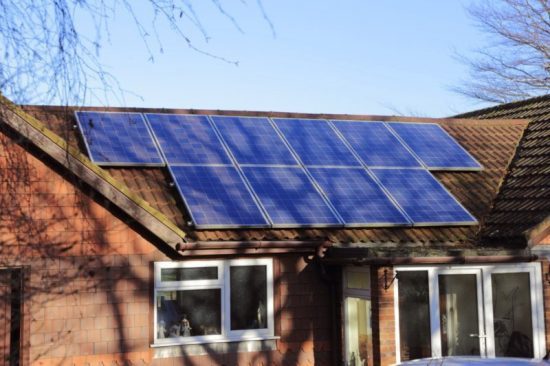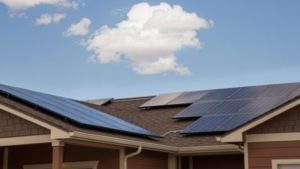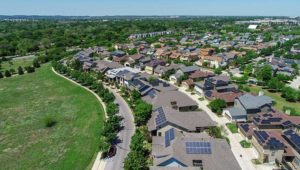So you’re one of the more than 1.5 million Australian households and small businesses to have installed rooftop solar. Well done! But are your solar panels working to their full potential? And if they weren’t, would you even know?
According to a recent report released by Sydney-based group Solar Analytics, the answer – on both counts – is ‘probably not’.

Data shows that while Australia’s is the highest-penetration solar market in the world, only 5-10 per cent of solar households use monitoring technology to understand their solar usage or improve their system’s performance.
This has led to a situation in which it is estimated that more than half of all Australian rooftop solar systems are underperforming – like this Darwin Council-funded $40,000 PV system which, after five years in operation, was found to be generating one-third of its potential capacity. Another 14 per cent are not working at all at any given point in time.
By contrast, in the US market, more than 90 per cent of solar households have solar monitoring, and sometimes multiple monitoring systems.
Part of the reason for this huge discrepancy, says Solar Analytics, is that in the US the majority of residential solar systems have been installed through lease agreements; that is, purchased by commercial entities and then leased to residences on purchase plans.
In Australia, the opposite is true. The vast majority of residential solar systems are owned outright by the household, who in turn own house on which the solar is installed.
“The discrepancy is pure capitalism,” says Solar Analytics. “US solar owners are businesses and need to ensure that their systems are working to capacity. Australian solar owners are in the dark.”
According to Solar Analytics CEO Stefan Jarnason, this “extreme under-use” of solar monitoring in Australia is likely rooted in a perception that a $5000+ solar system should look after itself.
“Couple that with a significant number of inferior quality solar panels and inverters in the market, and a lack of knowledge of independent solar monitoring, and it’s to be expected that homeowners are not aware that their solar systems are faulting or not working at all,” he said.
For Jelmer van Rooij – a Dutch student of energy technology who came here six months ago to “explore the Australian clean energy transition” – this knowledge deficit represents a huge opportunity, not just for consumers, in terms of untapped solar value, but for the growing number of energy industry start-ups whose very specialty is using clever software to get the most out of rooftop solar and storage.
To this end, Van Rooij has been working with project partner Peter Tylee on developing a solar mapping tool, called Solar Captus, that aims to use satellite imaging and image recognition software to create a database of all 5GW of Australia’s rooftop solar systems.
The Solar Captus, which has its origins in the CSIRO’s Solar Hackathon event of April this year, is a work in progress. But van Rooij believes it could be a goldmine of information as Australia transitions to distributed renewable energy.
“A lot of people with solar aren’t completely aware of the value that solar can have,” he said in an interview with One Step Off The Grid on Tuesday. “To convince these people to use their solar in the right way, you need to find the right households to target.
“Energy companies might have this data, but aren’t necessarily motivated to use it,” he said. “There are a lot of companies that can actually enter this industry, like Google or Telstra, …who are thinking, these customers already have an above average interest in energy, what can I provide them with to enhance their existing energy system?”
And this is where van Rooij hopes his solar mapping tool will come in.
“(The data) empowers the right companies and a great diversity of companies to provide a range of services to give customers the services to get the most value from their renewable energy systems and to lead the transition to distributed energy,” he said.
Van Rooij says he was attracted to the Australian energy market because of its huge uptake of rooftop solar, but notes that in terms of policy and regulatory progress, it lags behind other parts of the world.
“In Holland there are a lot of subsidies going to start-ups and renewable energy companies,” he said.”It’s like a race to the top in the EU. And that’s something that Australia misses.
“When you look at Australia, it’s really people-powered energy. So it’s not because the government has incentivised it; it’s not because it financially makes sense.
“People want to be a part of the energy transition, they want to take the power back. They like not being reliant on someone else. It’s a beautiful thing to actually see where your energy comes from and how you are using it. And it’s beautiful, if you have battery storage, to think as you watch TV at night, this is powered by stored sunshine!
“The energy industry has been dominated by small number of companies. They’re like inefficient machines. Now, with software, distributed energy changes the whole game. There are so many opportunities for a range of companies.
“There may not be a lot happening (in this space in Australia), but the things that are happening are really high quality, so there’s great value.”
Van Rooij points to Canberra-based company Reposit Power as one example, here. Those paying attention would know that Reposit’s GridCredit technology has been getting some media attention of late, not least of all for its pairing with the first Tesla Powerwall battery system to be installed in Australia earlier this year.
The software is programmed to act as the brains for solar and storage systems, using data and intelligence to determine when best to consume the rooftop solar power, when to store it and when to sell it to the grid. As Reposit Power CTO and co-founder Lachlan Blackhall put it, the technology effectively turns solar and storage into “a mini power station” that works just for the consumer.
“You capture excess solar when there is excess, and use it when it’s most efficient for you – when energy prices would otherwise be high,” Blackhall told One Step Off The Grid in an interview in February.
Another company doing similar things for solar households is Sunverge, which made the news recently for its pairing with AGL Energy on the development of a world-first 5MW virtual power plant in South Australia, made up of 1000 individual rooftop solar and battery storage systems, all centrally managed by Sunverge’s software.
We explore the technology used in this project, and its benefits for consumers, in greater detail in this article, also in this week’s edition of One Step. But basically speaking, Sunverge – which also makes battery storage hardware – has pioneered a solar and battery storage monitoring program that uses a range of data to ensure home energy systems are working, and doing so to their best ability.
Another start-up getting attention in this space is Sydney-based real-time energy data management company Wattwatchers, whose energy auditor technology is also targeting increasingly switched on energy consumers.
“I strongly believe that if we give consumers access to real time data they will reduce their energy consumption significantly – either to be green or to save money,” Wattwatchers’ new managing director Gavin Dietz told RenewEconomy in an interview last month.
“That’s what we expected to come out of the smart meter space, but it hasn’t broken out of the regulated space. We haven’t seen anyone truly empower the customer in that way,” he said.
But for Solar Analytics’ Jarnason, the coming of age of this technology is less about consumer empowerment, and more about providing a service that is essential to households with solar and storage.
“Solar monitoring isn’t a ‘nice to have’ product. It’s essential. In the US, solar owners use monitoring much as you would use the dashboard of your car to keep abreast of your usage and issues.
“Thousands of dollars have been invested in a solar system and you rely on getting hundreds to thousands of dollars a year in benefits.
“Even for Australian solar owners who are regularly maintaining their solar panels, they need to be able to use a comprehensive solar dashboard to determine how their system is performing, what needs fixing or improving, where they are consuming their energy and to optimise their system to make their solar investment work harder for them. And it needs to be easy to understand,“ says Jarnason.
“Car comparisons aside, it just makes sense,” he said.
This article was originally published on RE sister site One Step Off The Grid. To sign up for the weekly newsletter, click here.









